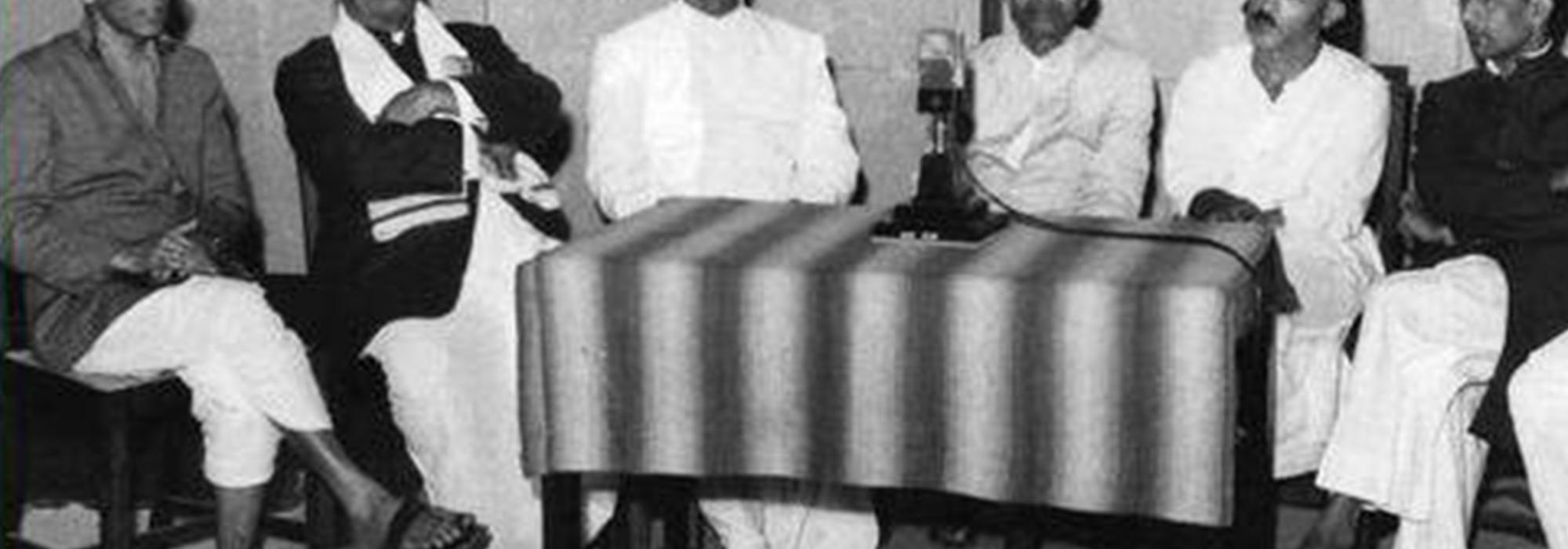In its history of more than a thousand years, Kannada literature’s most recent golden age came in the 20th century with the advent of the Navodaya movement, which can be called as the ‘Kannada literary renaissance.’ Many of the poets and writers of this era were polyglots and they drew from the rich cultural streams of regional language writings, thus adding to the perennial river of Indian literature.
The influence of Bengali language and literature on Kannada began with some of the notable figures of the 19th century, particularly those who were spiritual masters, social reformers, or patriots – Ramakrishna Paramahamsa (1836-86), Bankim Chandra Chattopadhyay (1838-1894), Rabindranath Tagore (1861-1941), Swami Vivekananda (1863-1902), and Sri Aurobindo (1872-1950), among others. It would not be incorrect to say that the three main areas that connected Kannada writers with Bengal were: spirituality, nationalism, and social reform.
Perhaps the earliest translator of Bengali literature into Kannada was Bindiganavale Venkatacharya, who translated many of Bankim Chandra’s writings. Venkatacharya was a contemporary of Swami Vivekananda. He was so fond of Bengali that he had taught the language to all his family members and even his neighbours. When Swami Vivekananda visited Bangalore, he stayed with Venkatacharya and Swamiji was surprised to find that everyone around him spoke to him in Bengali!
Swami Vivekananda has been an influence on generations of Kannada writers, starting from T S Venkannayya, A R Krishnashastry, D V Gundappa, and Kuvempu all the way to S L Bhyrappa, the finest Kannada writer of our times. Venkannayya wrote the earliest biographies of Ramakrishna and Vivekananda. Krishnashastry wrote about Vivekananda. Kuvempu, who was closely associated with the Ramakrishna Mission, was deeply influenced by the teachings of Ramakrishna and Vivekananda. Apart from writing their biographies in Kannada, he translated many of Swami Shivananda’s writings from Bengali to Kannada.
Another great influence on Kannada litterateurs was Sri Aurobindo. Kuvempu, Da Ra Bendre, and V K Gokak were huge admirers of his works, as was the mystic poet and polyglot Madhurachanna. When Ko Chennabasappa was translating Aurobindo’s Life Divine into Kannada, he was unsure of some words and usages, so he referred to a Bengali translation of the book that Aurobindo had approved.
Most writers and poets of the Navodaya era were fluent with at least six languages, be it DVG, B M Srikanthaiah, Masti Venkatesha Iyengar, Bendre, or Krishnashastry. S Srikanta Sastri knew 17 languages and M Govinda Pai was fluent in 22 languages. The Navya movement saw the death of the polyglot and later ‘revolutionary’ movements have taken the Kannada out of Kannada literature.
The Navodaya luminaries who were fluent in Bengali include Kuvempu, Bendre, Gokak, V Sitaramaiah, Venkannayya, Govinda Pai, K Krishnamoorthy, and Krishnashastry.
When the works of Bankim came out in Kannada, there arose an interest in Bengali. The craze for Bengali learning only increased with the advent of Tagore. Masti wrote about Tagore. T S Venkannayya translated essays of Tagore (and Bankim). He also wrote essays of literary criticism on Tagore’s works. A R Krishnashastry translated three volumes of Tagore essays. H V Savithramma translated many novels of Tagore.
Among the Navodaya writers, Shivaram Karanth didn’t know Bengali but he was influenced by Tagore and in many ways, he was like Tagore. Karanth didn’t write much poetry, but like Tagore, he too wrote novels, stories, and travelogues. He painted. He revived the art of Yakshagana almost single-handedly. He started a school amidst nature. He wrote about science and allied subjects. He wrote about Indian art and sculpture. He travelled extensively. We find so many parallels with Tagore!
Apart from Tagore, the novels of Sarat Chandra Chattopadhyay and Bibhutibhushan Bandyopadhyay were deeply appreciated by the Kannada-reading public when translations came out. Most of Sarat Chandra’s novels were translated into Kannada. Bendre translated 101 poems from Bengali to Kannada. Pa Vem Acharya, a journalist, translated many Bengali writings (under various pseudonyms). M S Krishnamurthy wrote about mystic poets of Bengali and translated the works of the 15th century Bengali poet Chandidas.
A remarkable work in Kannada about a Bengali writer is A R Krishnashastry’s thesis on the novels and writings of Bankim Chandra for which he got the Kendra Sahitya Akademi Award in 1961. Scholars opine that such a study of Bankim’s writings hasn’t been done in any language.
While Sanskrit has been the root for all Indian languages, over the past two millennia, they have developed in their own right with rich literary traditions. We also have a history of constant interaction between people speaking different tongues, thus mutually enriching their languages. In the context of our present education system, with such great emphasis on English over everything else, there is a great disconnect with one’s mother tongue itself, let alone other languages of India. Added to this, we have the serpent of regionalism raising its ugly head from time to time. If Indian languages have to connect—via translations and other means—it has to be based on something that is common to every Indian, be it the spirituality of sanatana dharma, or nationalism, or social reform. It may not happen through other means so easily.
















































